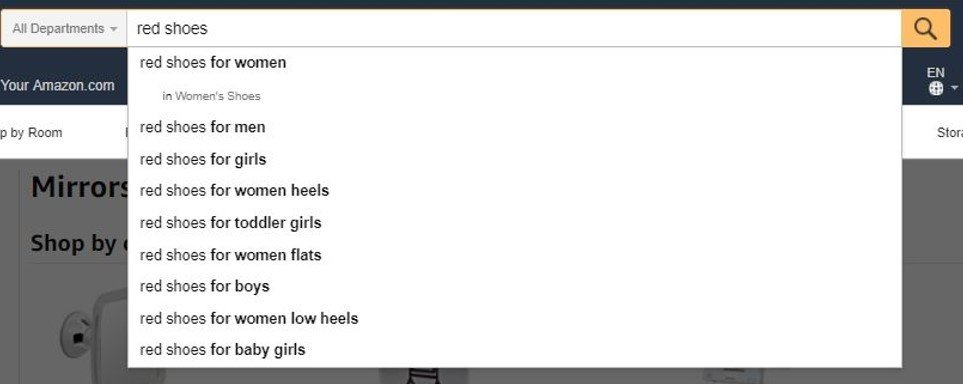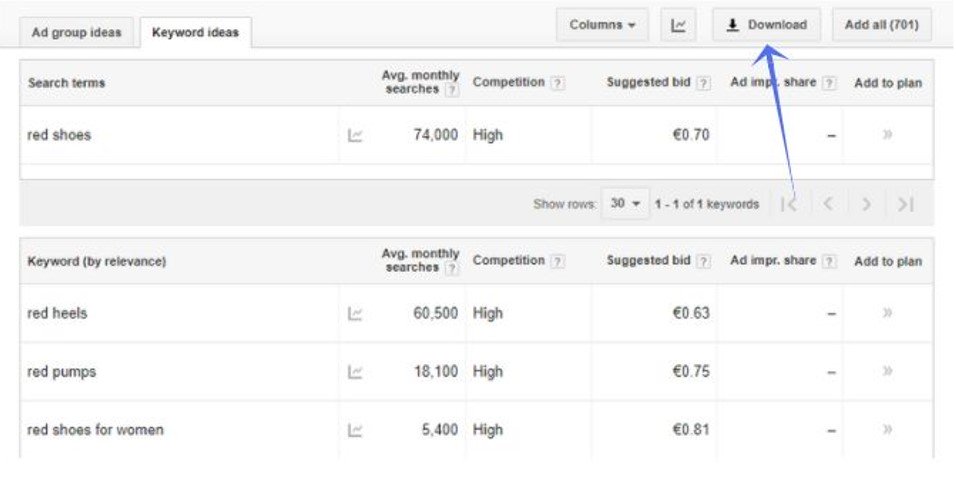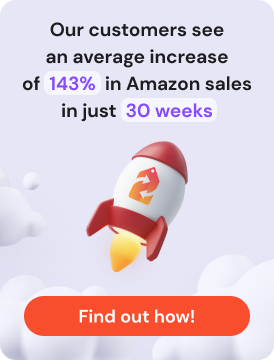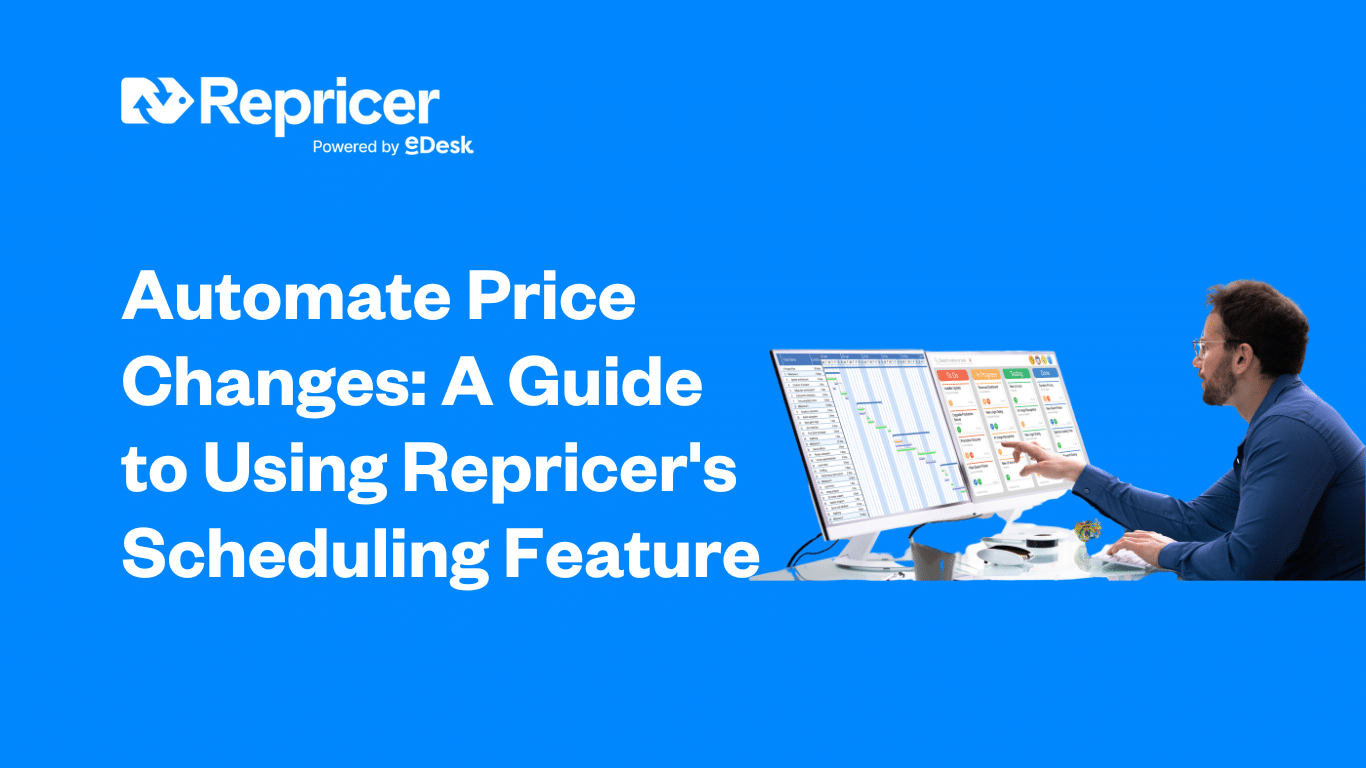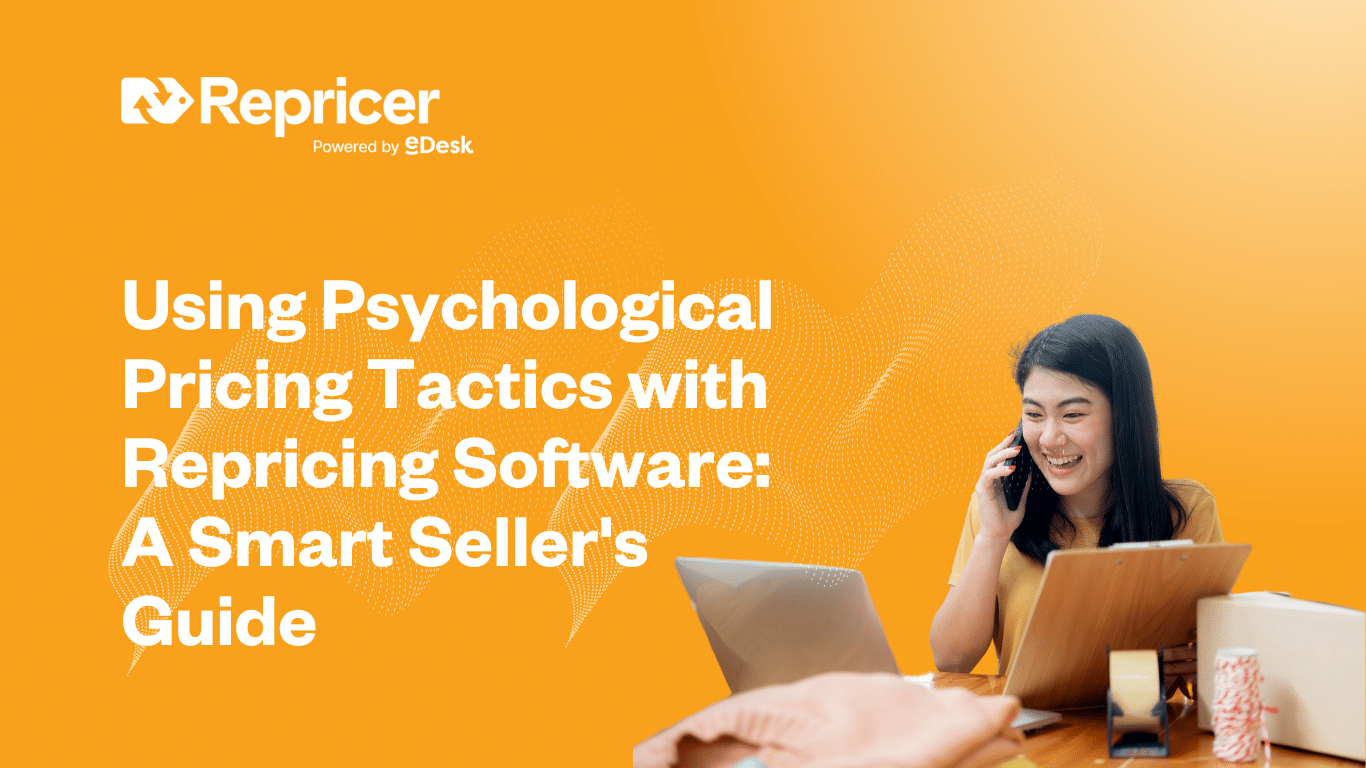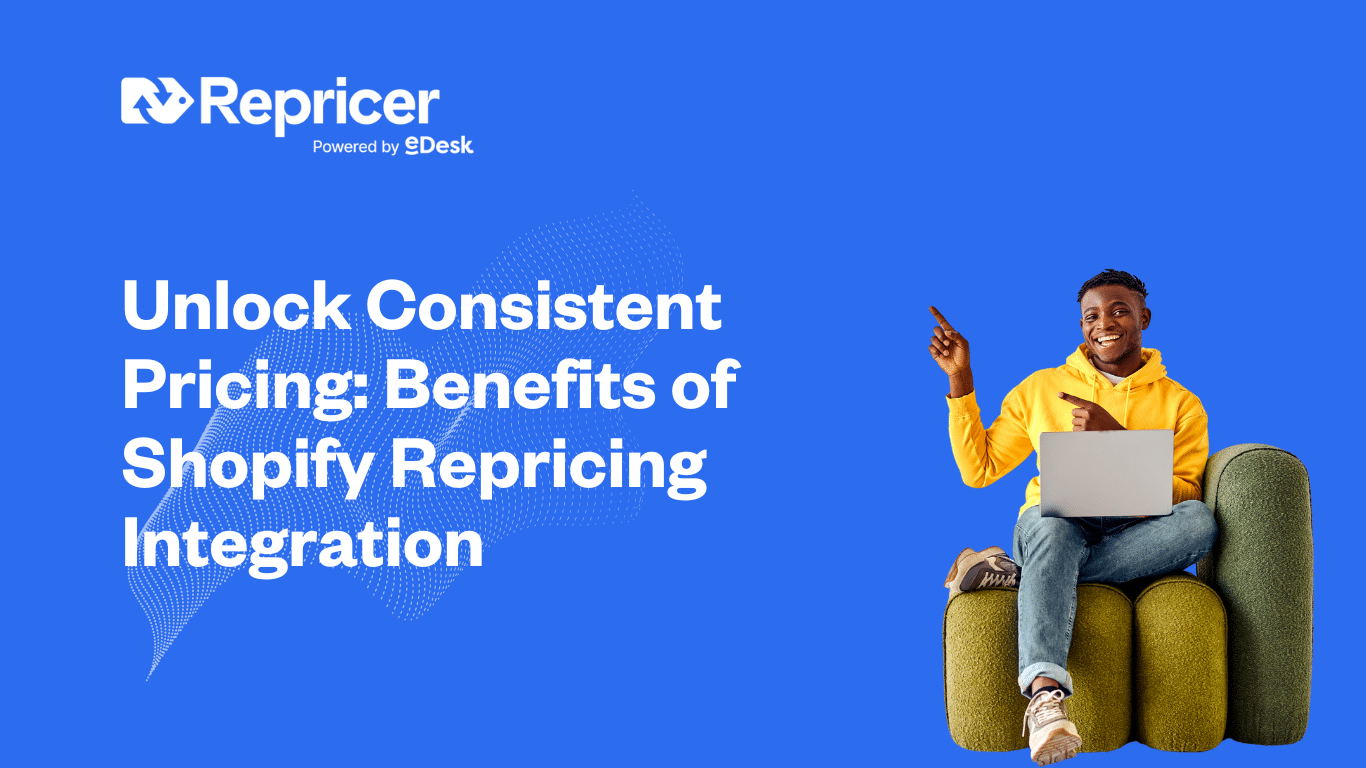Es gibt mehr als 2 Millionen aktiven Verkäufern auf dem Amazon-Marktplatz. Lassen Sie diese Zahl auf sich wirken. Der Wettbewerb um die Aufmerksamkeit der Verbraucher war noch nie so groß. Ein Aspekt Ihrer Verkaufsstrategie spielt in dieser Hinsicht eine zentralere Rolle als alles andere: Ihre Amazon-Produktangebote. Hier sind 3 wichtige Schritte zur Optimierung Ihrer Amazon-Angebote.
- Die Auswahl der richtigen Schlüsselwörter
- Beweisen Sie Ihren Wert für Amazon
- Optimierung der Produktseite
Die Auswahl der richtigen Schlüsselwörter
Mehr als 60% der US-Konsumenten beginnen ihre Produktsuche auf Amazon. Das bedeutet, dass Schlüsselwörter eine entscheidende Rolle in Ihrer Marketingstrategie spielen sollten, um sicherzustellen, dass so viele Kunden wie möglich Sie finden.
Wie wählen Sie diejenigen aus, die den größten Wert haben?
Eine erfolgreiche Optimierung Ihres Amazon-Angebots beginnt mit der Identifizierung der Schlüsselwörter, nach denen Ihre Kunden suchen, wenn sie bereit sind, einen Kauf zu tätigen. Y Sie können die Suchleiste des Marktplatzes als erste Orientierungshilfe verwenden. Wenn Sie ein Wort in die Suchleiste eingeben, erhalten Sie von Amazon Vorschläge, die auf früheren Kundensuchen basieren. Auf diese Weise können Sie sich ein Bild davon machen, wonach Käufer suchen, damit Sie keine wertvollen Schlüsselwörter verpassen.
Tools von Drittanbietern wie der kostenlose Keyword Planner von Google sind eine gute Möglichkeit, lukrative Keywords zu finden.
Geben Sie verschiedene Suchbegriffe ein, die sich auf Ihr Produkt beziehen, gehen Sie die Liste der vorgeschlagenen Schlüsselwörter durch und fügen Sie alle, die relevant sein könnten, in Ihr Feld für versteckte Suchbegriffe ein.
Sie können auch Keyword-Listen zu Ihren Produkten speichern, indem Sie die Daten, die Google Ihnen zur Verfügung stellt, in Tabellenkalkulationen herunterladen und für spätere Zwecke nach Suchvolumen sortieren.
Nehmen Sie Ihre wichtigsten Schlüsselwörter in den Produkttitel auf und verteilen Sie sie auf Ihrer Produktseite (z.B. in Aufzählungspunkten und in der Beschreibung), damit Amazon weiß, dass Ihr Produkt für jemanden, der mit diesem Schlüsselwort sucht, relevant ist.
Beweisen Sie Ihren Wert für Amazon
Hier ist Amazons eigene Erklärung zu seinem Algorithmus und wie Sie Ihr Angebot optimieren können, um in den Suchergebnissen zu gewinnen.
„Unsere Arbeit beginnt lange bevor ein Kunde eine Suchanfrage eingibt. Wir analysieren Daten, beobachten vergangene Traffic-Muster und indizieren den Text, der jedes Produkt in unserem Katalog beschreibt, bevor der Kunde sich überhaupt für eine Suche entschieden hat.
Während die Google-Suchmaschine so konzipiert ist, dass sie die beste Antwort auf eine Suchanfrage liefert, setzt sich Amazons A9 für die Produkte ein, von denen es glaubt, dass die Kunden sie am ehesten kaufen werden. Anders ausgedrückt: Wenn Amazon nicht glaubt, dass Ihr Produkt viele Einheiten verkaufen wird, dann wird es auch nicht hoch eingestuft.
Amazons Mission ist es, die genauen Bedürfnisse des Verbrauchers mit dem richtigen Produkt zu verbinden. Aus diesem Grund werden in den SERPs einzelne Produkte angezeigt, nicht die Unternehmen selbst.
Es gibt vier Schlüsselelemente, um Ihren Wert auf Amazon zu beweisen: 1) die Relevanz Ihres Produkts für den Verbraucher, 2) die Überzeugung von Amazon, dass Ihr Produkt konvertieren wird, 3) Ihre Fähigkeit, den Artikel pünktlich zu liefern und 4) konstant hohe Feedback-Bewertungen. Um bei Amazon zu gewinnen, müssen wir nach den Regeln des Unternehmens spielen. Daher müssen diese Elemente im Mittelpunkt Ihrer Strategie zur Optimierung Ihres Amazon-Angebots stehen.
Relevanz
Wenn ein Besucher beginnt, nach einem bestimmten Artikel zu suchen, entscheidet Amazon schnell, wie relevant Ihr Produktangebot für diese spezielle Suche ist. Diese Entscheidung basiert auf einer Reihe von Fakten, darunter Titel, Aufzählungspunkte und Produktbeschreibungen sowie die bereits erwähnten versteckten Suchbegriffe. Wir werden die besten Praktiken für jeden dieser Begriffe etwas später ausführlicher behandeln.
Umrechnungen
Amazon protokolliert die Verkaufsleistung jedes Produkts. Es kennt die historische Konversionsrate für jeden Artikel auf seiner Website. Produkte, die sich in der Vergangenheit gut verkauft haben, werden immer den Produkten vorgezogen, die neu auf der Plattform sind. Das mag unfair erscheinen, aber es macht Sinn. Sie setzen auf das Pferd mit den geringsten Quoten.
Es ist unmöglich, die durchschnittliche Verkaufsleistung eines Produkts über Nacht zu ändern, aber es gibt ein paar Schritte, die Sie unternehmen können, um sie sofort zu steigern.
Sie könnten den Preis des Artikels für einen kurzen Zeitraum senken, um schnell einige Verkäufe zu erzielen. Damit senden Sie ein klares Signal an Amazon, dass Ihr Produkt einen erheblichen Wert für den Verbraucher hat und es wert ist, in den SERP weiter nach oben zu rücken. Vergessen Sie aber nicht, den Preis wieder zu erhöhen, wenn das geschehen ist.
Es wäre auch sinnvoll, ein Repricing-Tool zu verwenden, um die Buy Box zu gewinnen. Hier werden die meisten Verkäufe getätigt und der Wettbewerb darum ist sehr hart. Der wichtigste Maßstab für den Erfolg einer Optimierungsstrategie für Amazon-Listen ist, ob sie zu mehr Verkäufen geführt hat. Ein sicherer Weg, dies zu erreichen, ist die konsequente Platzierung Ihrer Produkte in dieser Spitzenposition.
Eine exzellente Erfüllungsbilanz
Eine außergewöhnliche Versandstrategie ist einer der Eckpfeiler des unglaublichen Wachstums von Amazon. Sie ist ein Schlüsselfaktor dafür, dass sich das Unternehmen von der Masse abhebt.
Sie haben sich so sehr darauf konzentriert, weil es für den Verbraucher so wichtig ist. Im Idealfall möchte Amazon, dass jeder Händler, der über seinen Marktplatz verkauft, FBA (Fulfilled by Amazon) anbietet, um eine schnelle Lieferung auf der ganzen Linie zu garantieren (und natürlich auch einen ordentlichen Gewinn aus den damit verbundenen Gebühren zu erzielen).
Produkte, die an FBA teilnehmen, werden daher höher eingestuft als Produkte, die nicht an dem Programm teilnehmen. Eine Anmeldung könnte ein sehr kluger Schritt sein, vorausgesetzt, Sie verkaufen die richtige Art von Produkten. Wir haben hier einen Leitfaden zu den Vor- und Nachteilen geschrieben.
Wenn Sie diesen Service nicht in Anspruch nehmen möchten, ist es immer noch möglich, den Standard Ihres Versands in dem Maße zu verbessern, wie es Amazon erwartet. Sie müssen die Geschwindigkeit der Auftragsabwicklung erhöhen und die Verzögerungen bei der Auftragsabwicklung minimieren (wenn nicht sogar ganz eliminieren). Wenn Sie einen kostenlosen Versand anbieten, wird Ihr Versand in den Augen von Amazon ebenfalls einen enormen Aufschwung erfahren. Sie können jederzeit den Preis des Produkts erhöhen, um diese zusätzlichen Kosten auszugleichen.
Kundenzufriedenheit
Die Einhaltung Ihrer SLAs ist natürlich das A und O, wenn Sie die gefürchteten Strafen vermeiden wollen. Die Verkäuferkennzahlen, die Amazon festgelegt hat, sind ebenfalls wichtige Indikatoren dafür, wie gut Sie im Allgemeinen Ihren Service anbieten. Deshalb werden sie in den SERPs berücksichtigt.
Es liegt auf der Hand, dass die Verringerung der Anzahl negativer Bewertungen (und das Sammeln positiverer Bewertungen) Teil Ihres Plans zur Optimierung der Amazon-Listen sein muss. A Feedback-Tool kann sicherlich hilfreich sein, wenn Sie nur Kunden ansprechen, die wahrscheinlich gut über Sie sprechen werden. Um den größtmöglichen Nutzen daraus zu ziehen, müssen Sie jedoch sicherstellen, dass Ihr Kundenserviceteam ausreichend geschult ist, um eine große Anzahl von Anfragen zu bearbeiten. Wenn Sie sie mit einem speziell entwickelten Helpdesk-C an auch die Geschwindigkeit und Qualität ihrer Antworten erheblich steigern.
Optimierung der Amazon-Produktseite
Den perfekten Titel entwerfen
Es kann verlockend sein, so viele Schlüsselwörter wie möglich in Ihren Titel zu packen, und vielleicht gab es in der Vergangenheit einen Grund, dies zu tun, aber moderne Algorithmen sind zu intelligent, um auf diese Weise manipuliert zu werden.
Der Titel des Produkts muss einen Sinn ergeben. Er sollte sich nicht so lesen, als hätte ihn ein Roboter auf der Grundlage einer Liste von Suchbegriffen mit hohem Volumen zusammengestellt. Nehmen Sie nur die wichtigsten Schlüsselwörter auf, und nur solche, die für den Artikel, den Sie verkaufen, genau relevant sind. Wenn Sie den Kunden in die Irre führen, tun Sie sich damit keinen Gefallen. Kurzfristig können Sie damit vielleicht mehr Klicks generieren, aber die Optimierung Ihres Amazon-Angebots auf diese Weise wird nicht zu mehr Verkäufen führen.
Hier erfahren Sie, wie Sie einen Produkttitel am besten nutzen können.
- Verwenden Sie so viele der 250 Zeichen, die Ihnen zur Verfügung stehen, wie Sie können.
- Schreiben Sie mit der Absicht, so klar wie möglich zu sein und nicht zu verkaufen.
- Wenn es sich um ein Markenprodukt handelt, geben Sie zuerst den Markennamen und die Herstellernummer an.
- Nennen Sie mindestens ein Wertversprechen, das Ihr Produkt von anderen unterscheidet.
- Buchstabieren Sie Zahlen und Maße (z. B. Zoll, Pfund usw.).
Die Auswahl der idealen Bilder
Einschließlich des Hauptbildes erlaubt Amazon Ihnen, 9 Bilder pro Produkt anzuzeigen. Es lohnt sich auf jeden Fall, dieses Kontingent zu nutzen.
Das erste Bild, das der Kunde sieht, ist natürlich das wichtigste. Zusammen mit dem Produkttitel entscheidet es darüber, ob ein Betrachter eher auf Ihr Angebot als auf das eines Konkurrenten klickt.
Bild-Checkliste.
- Haben Sie einen weißen Hintergrund verwendet? Amazon lässt nichts anderes zu.
- Haben Sie den leeren Raum so weit wie möglich mit Ihrem Produkt gefüllt?
- Ist das Bild von hoher Qualität? Idealerweise sollten die Bilder mindestens 1000 Pixel breit und 500 Pixel lang sein.
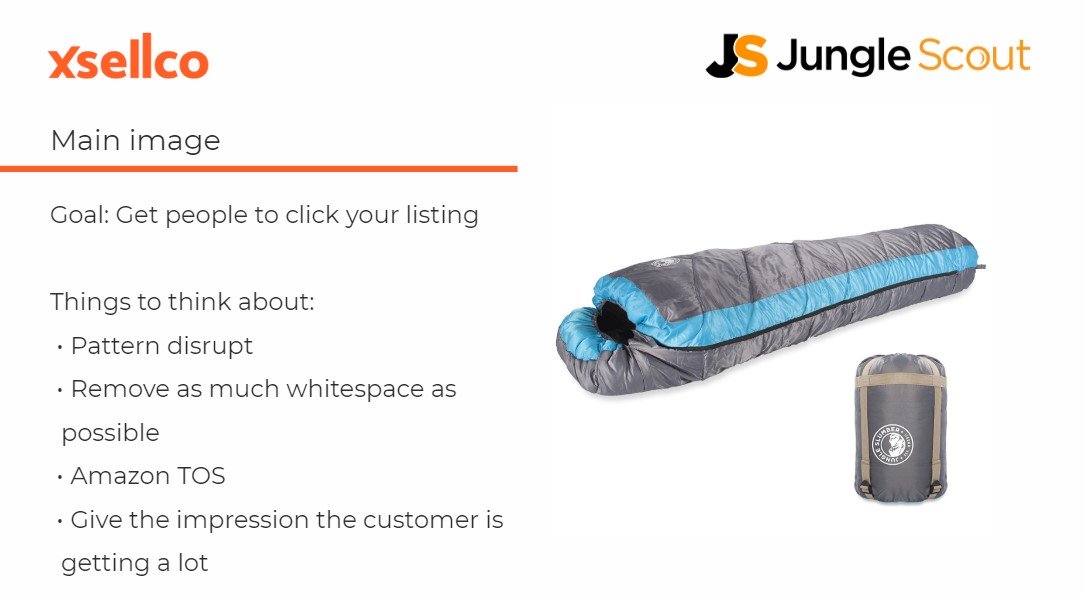
Wir haben uns kürzlich mit Greg Mercer, dem CEO von JungleScout, zusammengetan, um über die Erstellung der perfekten Bilder für die Optimierung Ihrer Amazon-Listings zu sprechen. Wir haben alle Arten von Bildern, die Sie benötigen könnten (einschließlich Lifestyle-, Produkt-, Beschreibungs- und Vergleichsmatrix) für eine Vielzahl von Produkttypen behandelt. Sie können sich diese Präsentation ansehen hier.
„Silberne“ Bullet Points
Im Abschnitt über die wichtigsten Merkmale können Sie maximal 1000 Zeichen für Ihre Aufzählungspunkte verwenden. Als Faustregel gilt: Versuchen Sie, nicht mehr als vier oder fünf zu verwenden. Noch einmal: Klarheit und Einfachheit sind unsere Prüfsteine.
- Weisen Sie auf die wesentlichen Details/Merkmale hin, beginnend mit den beeindruckendsten/relevantesten.
- Nennen Sie Materialien und zugehörige Eigenschaften (maschinenwaschbar, biologisch abbaubar, Edelstahl usw.).
- Wenn es Garantien oder Zusicherungen gibt, ist dies ein guter Ort, um sie anzugeben.
Eine überzeugende Beschreibung schreiben
Ehrlich gesagt, ist die Produktbeschreibung nicht so wichtig wie andere Aspekte des Angebots, aber das bedeutet nicht, dass sie nicht optimiert werden kann. Ein Grund mehr, dafür zu sorgen, dass Sie den maximalen Nutzen daraus ziehen.
Ihnen stehen 2.000 Zeichen zur Verfügung. Das ist reichlich Platz, um all die Gründe zu nennen, warum ein Kunde diesen Artikel braucht. Hier sollten Sie einige der wichtigsten Merkmale, die Sie im Titel und in den Aufzählungspunkten hervorgehoben haben, hervorheben und erweitern.
Einige goldene Regeln zum Befolgen.
- Halten Sie die Sprache einfach. Achten Sie darauf, dass die Sätze leicht zu lesen und zu verstehen sind, es sei denn, es ist absolut notwendig (Fachausdrücke, juristische Haftungsausschlüsse usw.).
- Vermeiden Sie auch hier, unnötig lange Sätze zu schreiben.
- Beginnen Sie mit dem stärksten Merkmal des Produkts. Was muss der Kunde über dieses Produkt wissen, was ist seine überzeugendste Eigenschaft?
- Malen Sie dem Kunden ein Bild davon, wie viel besser sein Leben mit diesem Produkt sein wird. Stellen Sie sich das Produkt im Hinblick auf die Probleme des Kunden und die Lösungen vor, die es bietet.
- Fügen Sie ruhig wieder die Schlüsselwörter ein (es wäre ziemlich schwer, das nicht zu tun, oder?), aber übertreiben Sie es nicht. Lesbarkeit ist das A und O.
Wenn Sie Ihre Amazon-Produktangebote mit diesen 3 Tipps optimieren, werden Sie mit Sicherheit einen Anstieg der Besucherzahlen für Ihre Produkte feststellen.
Repricer.com ist die ultimative Software zur Preisanpassung bei Amazon, mit der Sie sofort auf Veränderungen auf dem Markt reagieren und Ihren Mitbewerbern einen Schritt voraus sein können. Starten Sie noch heute eine kostenlose Testversion und gewinnen Sie die Buy Box.

